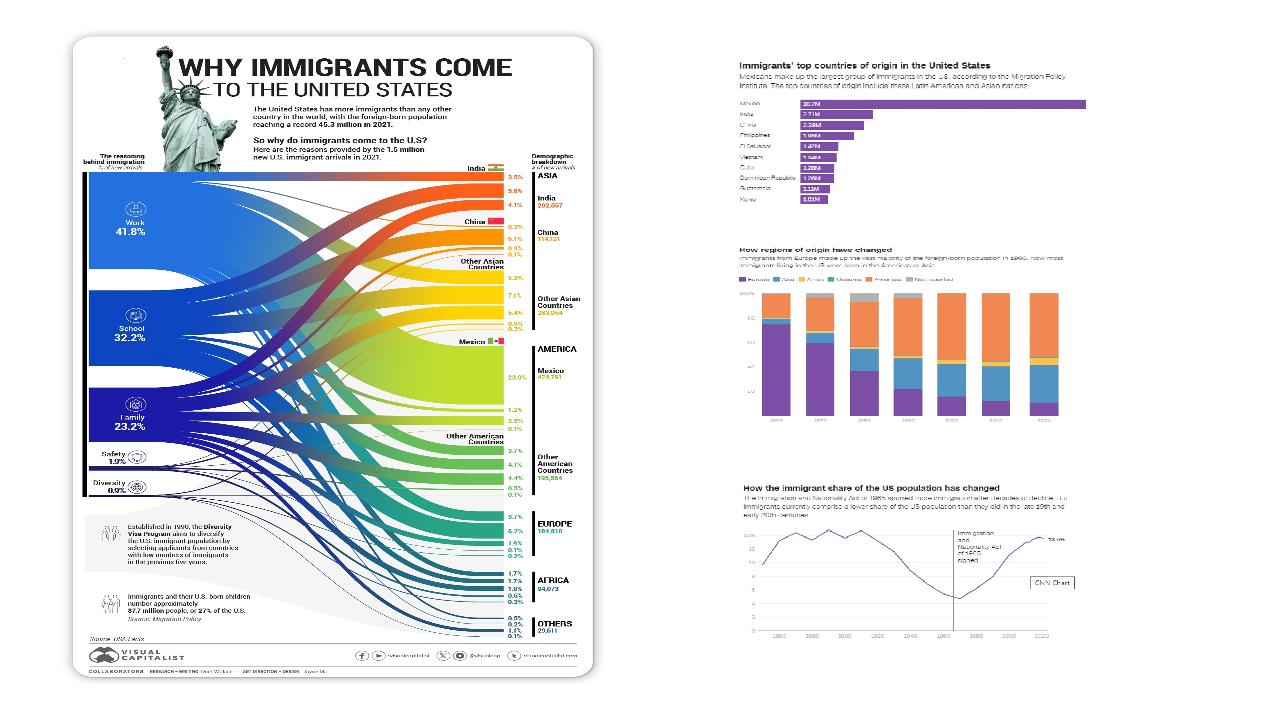Video:
Take our online poll:
AI Analysis:
Yes, immigration can influence voting dynamics in a variety of ways. The impact of immigration on voting can be complex and varies based on factors such as the size and composition of the immigrant population, the policies in place, and the overall political climate. Here are several ways in which immigration can change voting dynamics:
1) Demographic Changes: Immigration can alter the demographic composition of a region or country. New immigrants may have different political preferences than the existing population, potentially affecting the balance of power between political parties.
2) Voter Registration and Turnout: Immigration can contribute to changes in voter registration and turnout. Efforts to engage and mobilize immigrant communities can lead to increased political participation, potentially influencing election outcomes.
3) Political Preferences of Immigrant Communities: Immigrants may bring different political perspectives and preferences based on their cultural backgrounds, experiences, and policy priorities. This diversity can introduce new issues and perspectives into the political landscape.
4) Shifts in Electoral Margins: In areas with significant immigration, the voting margins for political parties may shift. Certain demographics within immigrant communities may align more closely with the platforms of specific political parties.
5) Policy Debates and Platforms: Immigration often becomes a prominent issue in political debates. The stances that political parties take on immigration policies can attract or alienate voters, shaping their overall appeal to the electorate.
6) Integration and Assimilation: The extent to which immigrants integrate into the political system and assimilate into the broader society can impact voting dynamics. Policies that facilitate or hinder integration can influence political participation.
7) Urbanization: Immigrants often settle in urban areas, leading to urbanization. Urban areas tend to have different political dynamics than rural areas, and the concentration of immigrants in cities can influence local and regional elections.
8) Party Realignment: Over time, the impact of immigration can contribute to party realignment, where political parties may adapt their platforms and positions to align with the changing demographics and preferences of the electorate.
9) Public Opinion and Sentiment: Immigration debates can shape public opinion and sentiment, influencing how voters perceive political issues and candidates. This can, in turn, affect electoral outcomes.
10) Policy Responses to Immigration: Political parties may adjust their policy platforms in response to changing demographics and the impact of immigration. This adaptation can influence voter support.
It's important to note that the effects of immigration on voting dynamics are context-specific and can vary widely. The political, economic, and social contexts of different regions and countries play a significant role in determining how immigration shapes electoral outcomes. Additionally, the narratives and framing of immigration issues by political leaders and the media can influence public attitudes and voting behavior.
Chart:

References:


Comments